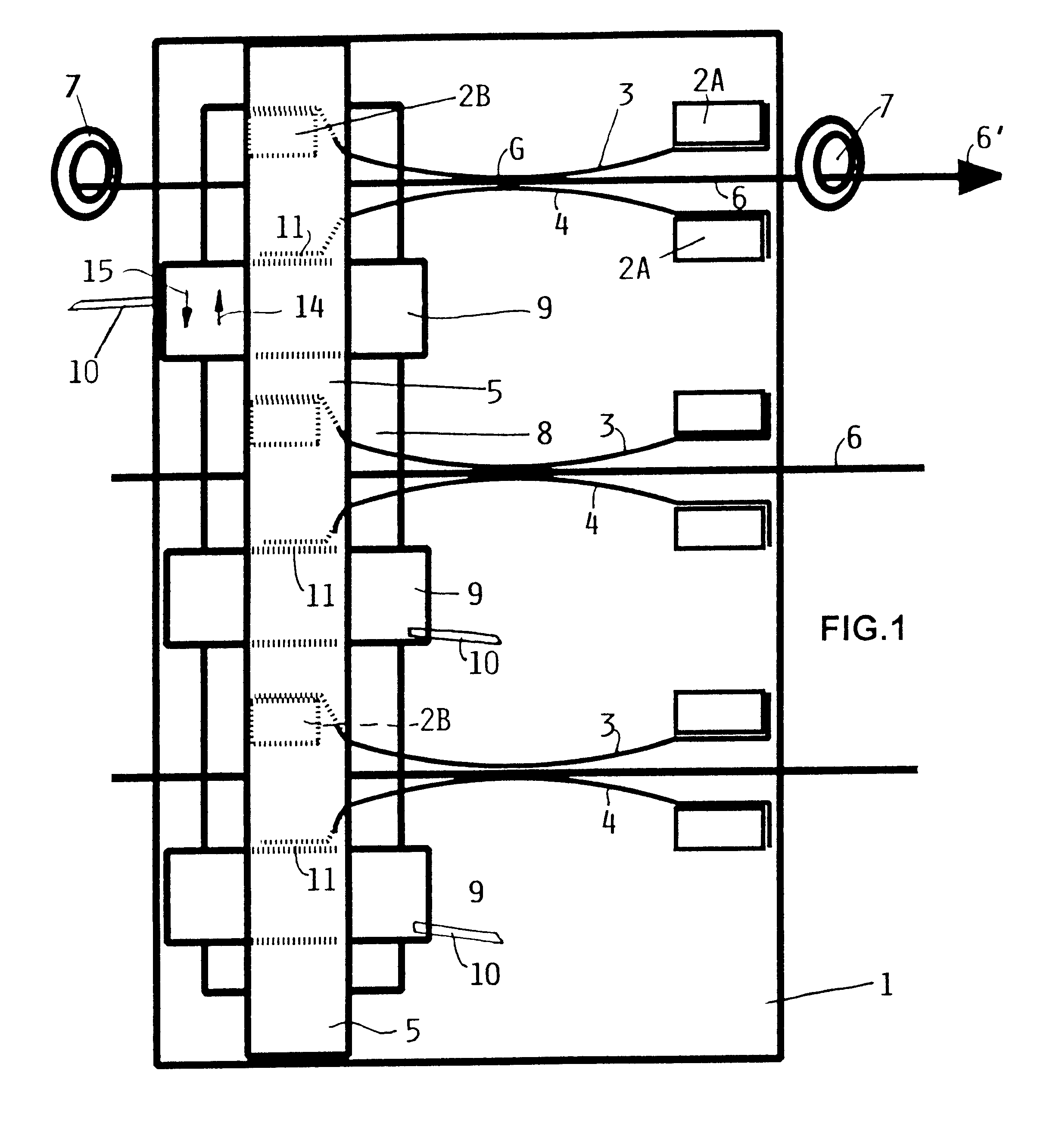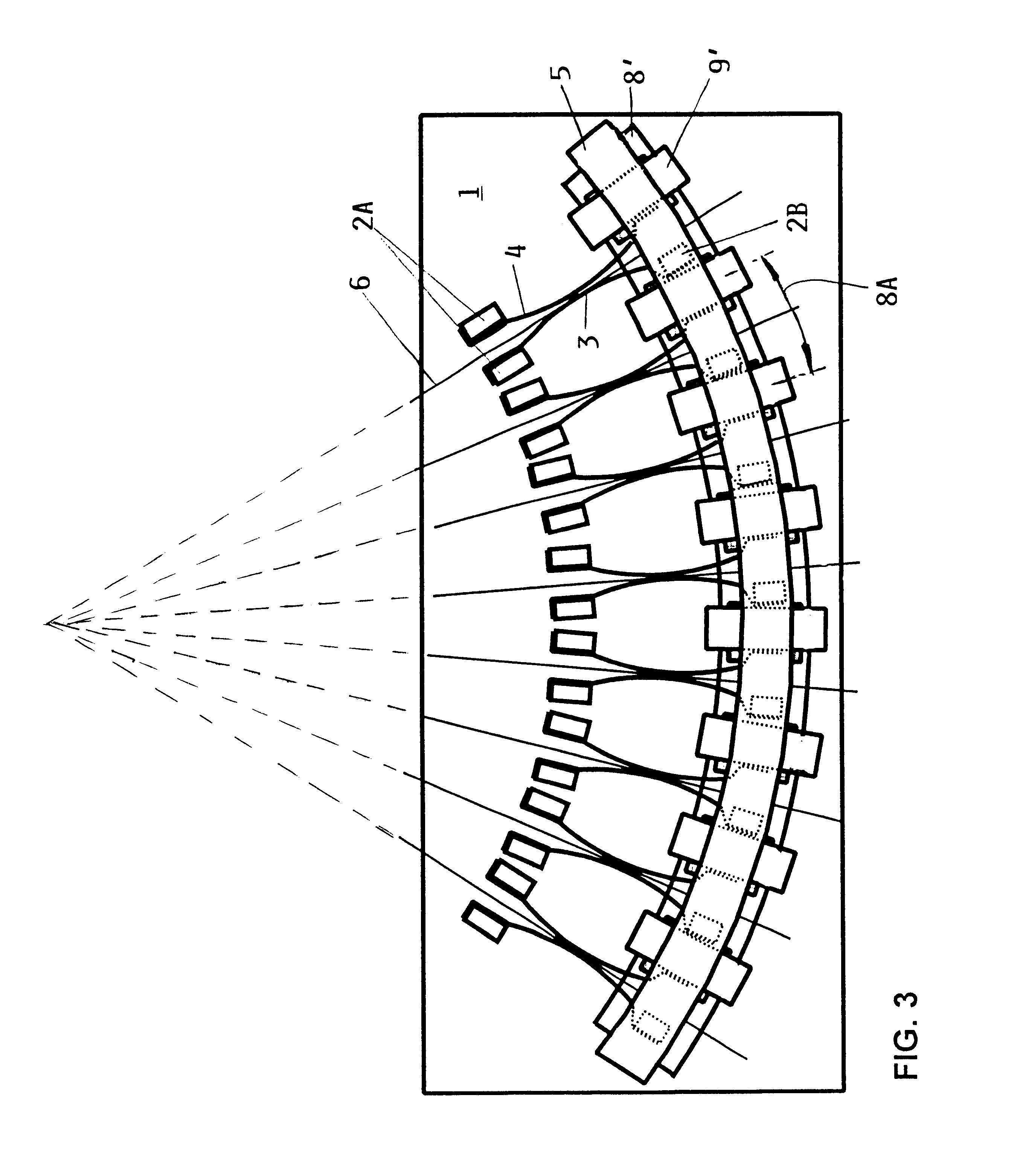Thread brake system with a linear electric motor for weaving looms
a technology of electric motor and weft thread, which is applied in the direction of weaving, looms, dynamo-electric machines, etc., can solve the problems that the requirements cannot be satisfactorily met at all times by conventional weft thread brakes, and achieve the effects of rapid reaction, precise operation and compact construction
- Summary
- Abstract
- Description
- Claims
- Application Information
AI Technical Summary
Benefits of technology
Problems solved by technology
Method used
Image
Examples
Embodiment Construction
FIG. 1 shows a support 1 that may be part of a loom frame or the like. Mountings 2A, 2B are secured to the support 1. Flexible elements 3 and 4 such as lamellae or leaf springs are arranged in pairs and mounted to the mountings 2A and 2B. These flexible elements are preferably curved so that their intermediate sections form a gap G through which a thread 6 guided by thread guides or thread eyes 7 passes from a supply not shown toward the weft insertion as indicated by the arrow head 6'. One of the leaf springs 3 is mounted in a fixed position, while the other leaf spring 4 of a pair is moveably mounted at least with one of its ends. The mountings 2A and 2B are either secured directly to the support 1 or to a mounting bar 5 which in turn is secured to the support 1. As shown, a plurality of leaf springs forming pairs of flexible elements 3, 4 are mounted on the support 1 so that these pairs of flexible elements 3, 4 are arranged side by side in a row or column. As mentioned, the thre...
PUM
 Login to View More
Login to View More Abstract
Description
Claims
Application Information
 Login to View More
Login to View More - R&D
- Intellectual Property
- Life Sciences
- Materials
- Tech Scout
- Unparalleled Data Quality
- Higher Quality Content
- 60% Fewer Hallucinations
Browse by: Latest US Patents, China's latest patents, Technical Efficacy Thesaurus, Application Domain, Technology Topic, Popular Technical Reports.
© 2025 PatSnap. All rights reserved.Legal|Privacy policy|Modern Slavery Act Transparency Statement|Sitemap|About US| Contact US: help@patsnap.com



